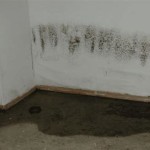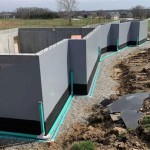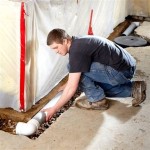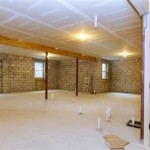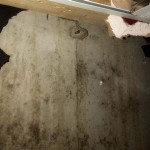How To Get The Humidity Out Of Your Basement
A damp, humid basement is a common problem for homeowners, contributing to a musty odor, fostering mold and mildew growth, damaging stored possessions, and potentially impacting the structural integrity of the house. Addressing basement humidity is crucial for maintaining a healthy and comfortable living environment. This article outlines several effective strategies for reducing and eliminating excess moisture in the basement.
Identify and Address Sources of Moisture
The first step in combating basement humidity is to accurately pinpoint the sources of the moisture. Without identifying and rectifying the underlying cause, attempts to control humidity will be temporary and often ineffective. Common sources of basement moisture include:
Leaks: Plumbing leaks from pipes, fixtures, or appliances such as washing machines and water heaters are frequent culprits. Regularly inspect all plumbing for signs of drips, corrosion, or water stains. Pay particular attention to joints and connections.
Foundation Cracks: Cracks in the foundation walls or floors provide a direct pathway for groundwater to seep into the basement. Even hairline cracks can allow significant amounts of moisture to enter over time. Examine the foundation walls, both inside and outside, for any visible cracks. Also, look for signs of water stains or efflorescence (a white, powdery mineral deposit) on the interior walls, which indicates water penetration.
Poor Drainage: Inadequate exterior drainage can lead to water accumulating around the foundation, eventually seeping into the basement. Ensure that the ground slopes away from the house at least six inches over the first ten feet. Clean gutters and downspouts regularly to prevent overflows and direct water away from the foundation. Consider extending downspouts further away from the house if necessary.
Condensation: Condensation occurs when warm, moist air comes into contact with cool surfaces, such as concrete walls or cold pipes. This is especially prevalent during the warmer months when outdoor air is more humid. Condensation can be identified by the presence of water droplets on surfaces and a generally damp feeling in the basement.
Groundwater Seepage: In areas with high water tables or poorly draining soil, groundwater can seep through the foundation walls and floor. This is more common in older homes or homes built on clay soil. Evidence of groundwater seepage includes dampness throughout the basement, water stains on the walls, and a persistently high humidity level.
Once the source of moisture has been identified, appropriate corrective actions should be taken. Repairing leaks, sealing cracks, improving drainage, and addressing condensation issues are all essential steps in getting the humidity out of the basement.
Improve Ventilation and Air Circulation
Proper ventilation and air circulation are critical for reducing humidity levels in the basement. Stagnant air allows moisture to accumulate, creating a favorable environment for mold and mildew growth. Strategies to improve ventilation and air circulation include:
Opening Windows: During periods of low humidity outside, opening basement windows can help to exhaust moist air and introduce drier air. However, this strategy is only effective when the outdoor humidity is lower than the indoor humidity. It's important to monitor humidity levels both inside and outside the basement before opening windows.
Using Fans: Fans can help to circulate air and prevent moisture from accumulating in stagnant areas. Strategically place fans around the basement to promote airflow and dry out damp spots. Consider using oscillating fans to distribute air more evenly.
Installing Exhaust Fans: Exhaust fans are particularly useful in removing moist air from specific areas, such as laundry rooms or bathrooms located in the basement. Install exhaust fans that vent directly to the outside and ensure they are properly sized for the space. Run the exhaust fan during and after activities that generate moisture, such as showering or doing laundry.
Improving Airflow from HVAC System: Ensure that the basement receives adequate airflow from the home's heating, ventilation, and air conditioning (HVAC) system. Check that vents are open and unobstructed. If the basement is consistently warmer or cooler than the rest of the house, consider adjusting the HVAC system to balance the temperature and airflow.
Dehumidifiers with Integrated Ventilation: Certain dehumidifier units can be connected to external ducting to actively exhaust moist air outside while simultaneously pulling in drier air, much alike a dedicated ventilation system. These advanced systems allow for continuous operation and can drastically reduce humidity levels in consistently damp basements.
By improving ventilation and air circulation, the rate of evaporation can be accelerated, which helps to remove moisture from damp surfaces and reduce overall humidity levels.
Employ Dehumidifiers and Moisture Absorbers
Dehumidifiers and moisture absorbers are effective tools for removing excess moisture from the air in the basement. Dehumidifiers work by drawing in air, removing moisture through a cooling process, and then expelling the drier air back into the room. Moisture absorbers, such as calcium chloride crystals, work by absorbing moisture from the air and holding it in a container. The choice between a dehumidifier and a moisture absorber depends on the size of the basement, the severity of the humidity problem, and personal preferences.
Choosing the Right Dehumidifier: When selecting a dehumidifier, consider the size of the basement and the severity of the humidity problem. Dehumidifiers are rated by the amount of moisture they can remove per day, typically measured in pints. For a moderately damp basement, a dehumidifier with a capacity of 30-50 pints per day may be sufficient. For a very damp basement, a dehumidifier with a capacity of 50-70 pints per day or higher may be necessary. Look for dehumidifiers with features such as automatic shut-off, adjustable humidity settings, and a built-in pump for easy drainage.
Placement and Maintenance of Dehumidifiers: Position the dehumidifier in a central location in the basement, away from walls and obstructions. Ensure that the air intake and exhaust vents are not blocked. Empty the water collection tank regularly or connect the dehumidifier to a drain hose for continuous drainage. Clean the dehumidifier's filter regularly to maintain optimal performance. Depending on the model, some dehumidifiers will automatically shut-off when the water tank is full to prevent overflowing, but consistent manual checks are still recommended.
Using Moisture Absorbers: Moisture absorbers are a low-cost and portable option for reducing humidity in small areas. Place moisture absorbers in damp corners, closets, and other areas where moisture tends to accumulate. Replace the moisture absorber crystals or desiccants regularly, as they will become saturated over time. It is important to note that moisture absorbers are less effective than dehumidifiers for addressing severe humidity problems.
Combining Strategies: For optimal humidity control, consider using a combination of dehumidifiers and moisture absorbers. A dehumidifier can be used to remove the bulk of the moisture, while moisture absorbers can be used to target specific areas that tend to remain damp. This multi-pronged approach can provide comprehensive protection against basement humidity.
Seal and Insulate the Basement
Sealing and insulating the basement can significantly reduce humidity levels by preventing moisture from entering the basement and by reducing condensation. Sealing helps to prevent air leaks and water seepage, while insulation helps to regulate temperature and reduce condensation. Strategies for sealing and insulating the basement include:
Sealing Cracks and Gaps: Use caulk or sealant to seal cracks and gaps in the foundation walls, around windows and doors, and where pipes and wires enter the basement. Pay particular attention to areas where there is evidence of water penetration. Properly sealing these openings will help to prevent moisture from entering the basement and reduce drafts.
Waterproofing the Walls: Apply a waterproof coating to the interior foundation walls to prevent water from seeping through. Several waterproofing products are available, including cement-based coatings, acrylic coatings, and epoxy coatings. Follow the manufacturer's instructions carefully when applying these coatings. For more extensive waterproofing, consider hiring a professional to install a waterproof membrane on the exterior of the foundation walls.
Insulating the Walls: Insulating the basement walls helps to regulate temperature and reduce condensation. Several types of insulation can be used, including fiberglass batts, rigid foam boards, and spray foam insulation. Rigid foam boards are particularly effective at insulating concrete walls because they are moisture-resistant and provide a thermal barrier. Spray foam insulation is another good option because it can seal air leaks and fill gaps in the walls. When installing insulation, be sure to follow local building codes and safety guidelines.
Insulating Pipes and Ductwork: Insulate cold water pipes and ductwork to reduce condensation. Pipe insulation is available in various materials, including foam sleeves and fiberglass wraps. Wrap the pipes and ductwork with insulation and secure it with tape or fasteners. This will help to prevent condensation from forming and dripping onto the basement floor.
Vapor Barrier Installation: Consider hiring professionals to install a vapor barrier system in conjunction with insulation. A vapor barrier prevents ground moisture from penetrating through the walls. This is often installed by applying a plastic sheeting against the foundation walls and ensuring it's properly sealed.
By sealing and insulating the basement, the amount of moisture entering the basement can be drastically reduced, leading to a drier and more comfortable environment. This can also help to lower energy bills by reducing heat loss in the winter and heat gain in the summer.
Implementing these comprehensive strategies will effectively reduce basement humidity. It may require some upfront investment and ongoing maintenance, but the benefits of a dry, healthy basement far outweigh the costs.

3 Ways To Prevent Humidity In A Basement Wikihow

Moisture In Basements Causes And Solutions Umn Extension

Get Rid Of Humidity In A Basement Without Dehumidifier

How To Reduce Humidity In A Basement Thermopro Blog

How To Lower Your Basement S Humidity Level

How To Lower Your Basement S Humidity Level

6 Causes Of Basement Moisture How To Fix Them

How To Get Rid Of Humidity In A Basement Without Dehumidifier

How To Get Rid Of Humidity In A Basement Without Dehumidifier

Have A Hot And Humid Basement Jes Foundation Repair
Related Posts
